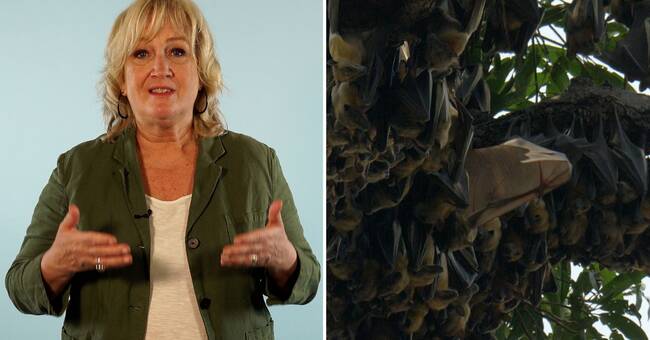Two thirds of all infectious diseases that affect humans come from other animals.
As pristine rainforests in the Amazon and Africa are ravaged, humans and animals are crowded together on smaller surfaces.
This increases the risk that we will be exposed to infections that jump from wild animals via pets and to humans.
Protecting biodiversity has emerged as a vital measure to save lives.
In the past, nature conservation has been about the immorality of eradicating other species.
They have as great a right to live as we humans.
But now it's not just about saving cute pandas, rare orchids or rhinos on the savannah for their own sake.
If species extinction continues, we expose ourselves to danger to life.
We humans are helplessly connected to everything else living on earth.
That's a lesson from the ongoing global corona pandemic.
Insatiable appetite
25 percent of all plant and animal species are endangered.
The fabric of life is torn as we burn and devastate.
Species-rich tropical forests are disappearing at an astonishing rate, driven by, among other things, Chinese timber industries.
After the large trees have been picked out, junk forests remain that are cultivated and become huge cocoa, avocado or pineapple plantations, all to satisfy the western world's insatiable appetite for tropical luxury crops.
Humans and pets are getting closer and closer to the wild animals that remain and carry the virus.
It upsets the balance that has existed, even though virus outbreaks caused by wild animals have existed for centuries, the risks of widespread infection have been kept at low levels.
It is a natural crisis that coincides with the climate crisis.
As Sweden gets an increasingly warmer climate and loses the cold winters, the risk of infections spread by birds and insects increases.
Researchers at SLU have found infectious ticks all the way up in Abisko.
The corona pandemic has made the connections visible and clear.
Nature conservation has weakened
But it is obvious that the natural crisis is a crisis too much to handle.
It is natural that the covid pandemic has been analyzed on the basis of the enormous human suffering it has caused.
But that it is also a tragedy that has sprung from the devastation of nature has so far been a blind spot.
When individual countries and the EU allocate historical sums in restart grants, it is true that some goes to climate measures, but almost nothing at all to the natural crisis.
In the OECD report “Biodiversity and the economic response to Covid-19”, the authors have a long “to-do” list;
the illegal global trade in shot wild animals (a source of virus in itself) must be stopped.
Appreciate the cost of destroying irreplaceable tropical forests, increase international cooperation to protect biodiversity.
Invest in jobs that go into maintaining national parks, stopping poaching and so on.
Instead, nature conservation has weakened during the pandemic, felling in the Amazon forests increased by 55 percent during the first half of 2020 compared to the same period the year before.
The business community, which has discovered the climate crisis as an exciting springboard to develop new, profitable green technical solutions, needs to become equally involved in the natural crisis.
But it requires that untouched nature has an economic value that the stock market understands.
The question is how?

